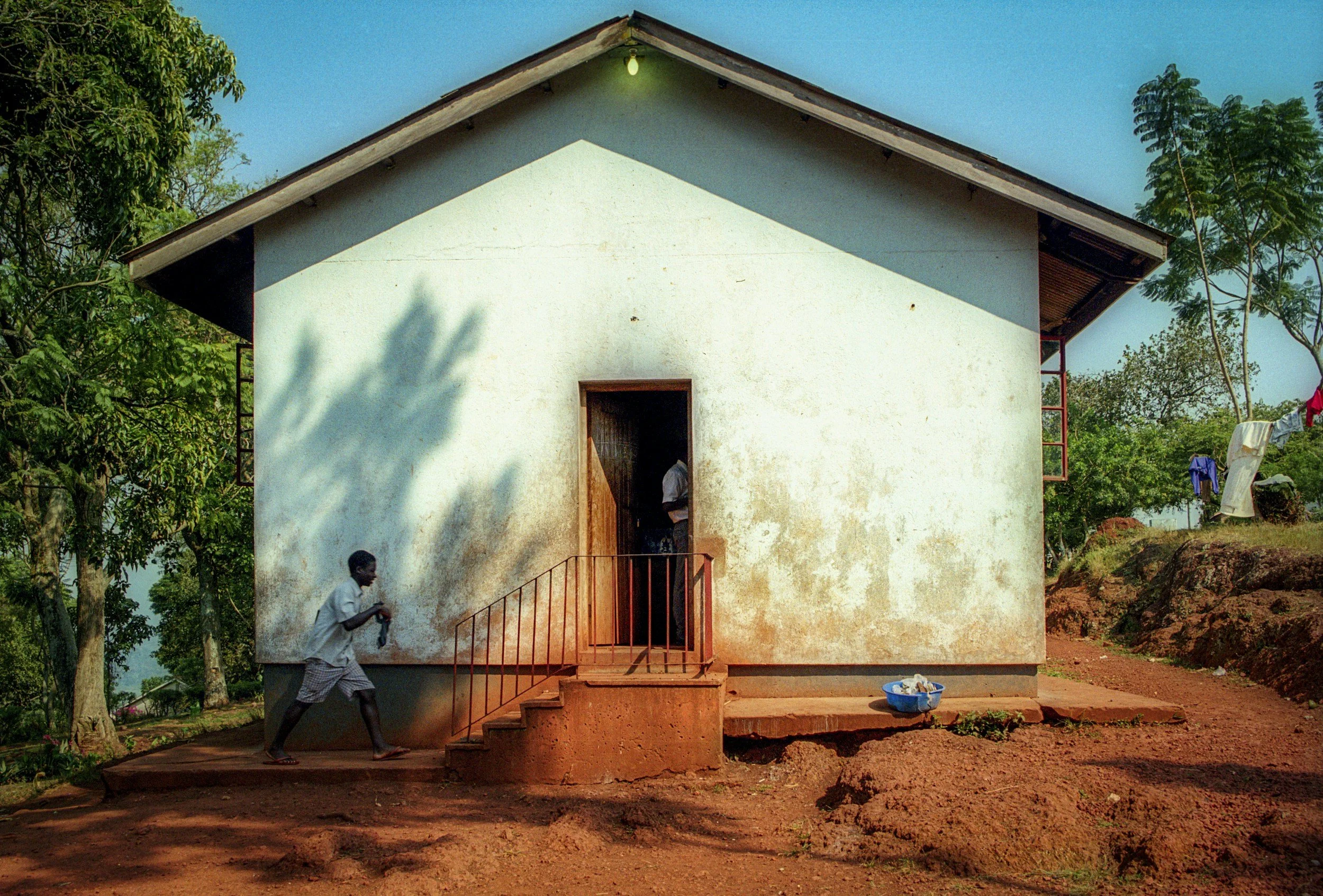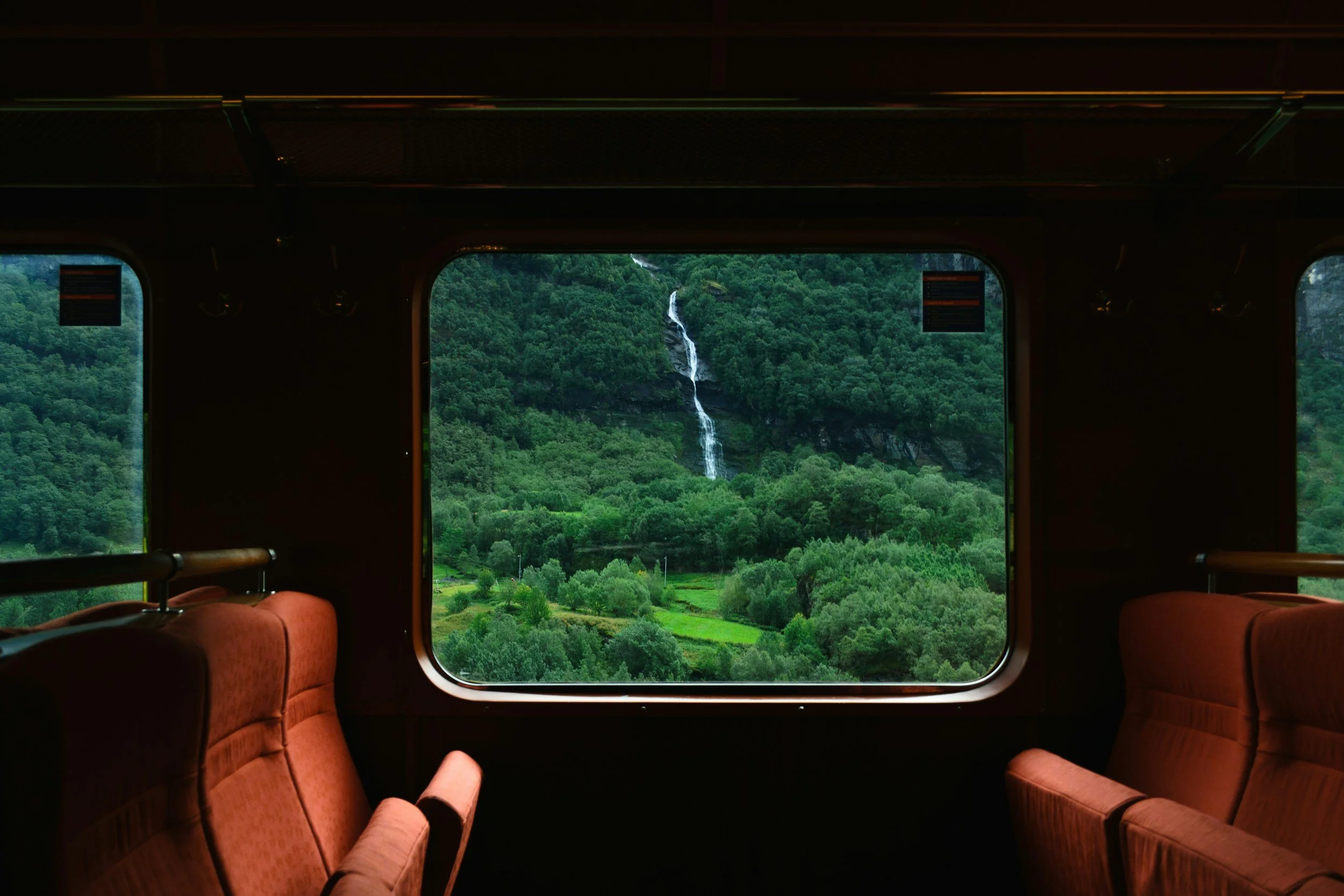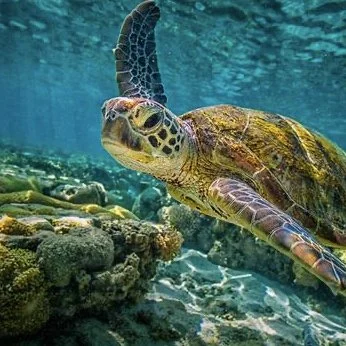Browse All Articles

The Crowd Knows Best: Why Tourism Needs Crowdsourcing
We need to involve more people more often in our decisions!
Tourism thrives on connection, between people, places, and stories. So why are we still relying on boardroom brainstorming and consultant playbooks? The best answers are already out there, waiting for us to ask the right questions.
Crowdsourcing isn’t new; it’s just overlooked. From centuries-old competitions to the innovation playground of the App Store, crowdsourcing invites everyone to contribute. The result? Diverse, unexpected solutions that outperform the narrow focus of traditional strategies.
In tourism, this means tapping into fresh ideas, direct from the people who experience, live, and breathe the destination. Locals, visitors, dreamers. The head and the tail of the curve, coming together.
Scotland asked travelers to share their #ScotSpirit, and what they got was a treasure trove of authentic stories. Maui turned small-town charm into big-time tourism by letting locals lead the way. Amsterdam crowdsourced solutions for overtourism, shifting the spotlight to hidden gems.
The process is simple: cast a wide net, sift for brilliance, and let the best ideas shine. Crowdsourcing isn't just a tool; it's a mindset shift. It’s about building tourism with people, not just for them.
The answers are out there. All we have to do is listen.

Dare to Stand Out: Making Sustainability Unforgettable
Most sustainable initiatives get lost in the crowd. A green label here, an environmental report there. It’s not enough. People see it, but they don’t care.
Want to get noticed? Do something worth remembering. Not just worthy of applause from the industry, but something that makes your customers stop, point, and share your story.
Patagonia did it. They said: Don’t buy this jacket. Not because they wanted to sell fewer jackets, but because they wanted to sell something bigger: a value, an idea, a message people could take with them.
To succeed with sustainability, you have to make it easy for people to care. No one reads the fine print in your sustainability report. But everyone notices the little moment that makes them feel something.
So how do you do that?
Surprise your customers. Do something unexpected that gets them talking.
Tell a story that matters. Not just what you’re doing, but why it matters to them.
Make the choice effortless. Can your customers feel like heroes just by choosing you?
Sustainability isn’t about shouting the loudest. It’s about being remembered. Make it impossible for people not to notice you.

The Machine That Never Stops: How Travel Became an Obligation
The post-war era gave us a gift: growth. More planes, more destinations, more travelers. We wrapped dreams in brochures, films, and advertisements, and it worked. Who wouldn’t want to travel?
In the 1950s, vacations were a luxury. By the 1960s, they became a trend. In the 1980s, a right. And today? A necessity. Travel has shifted from offering a dream to making travel an expectation, almost an obligation. If you’re not traveling, what are you doing?
The industry itself created this problem. We made travel cheap, easy, and accessible to everyone. We built a machine that never stops, and now we blame its unstoppable nature. “People will travel no matter what,” we say, “so it’s up to us to manage the demand.” But the truth is, we created the demand.
Our marketing has been flawless:
We’ve sold the romance of Paris, the adventure of Thailand, and the freedom of a road trip through the U.S.
We’ve turned airports into shopping destinations and tax-free goods into part of the experience.
We’ve celebrated loyalty points as something you “earn,” convincing you that flying more saves money.
At the same time, we’ve removed every barrier:
Flights are cheaper than your dinner.
Hotel rooms can be booked with a single click.
“Travel guilt-free,” we say, offering certifications, carbon credits, and fancy acronyms like SAF and LNG.
And when the consequences knock at the door, we provide the solutions:
“Overtourism? No problem, we’ll build better infrastructure. More airports. More hotels. More growth.”
“Climate concerns? No reason to stop traveling, we’ve got offsets and biofuels Hey, we are certified!”
We claim to have the answers, but in reality, we’ve only created a market for new products that let people continue as before. We profit from both the problem and the solution, all while leaving the concept of growth unquestioned.
From the 1950s to today, growth has been enormous, and we boast about it. But in the pursuit of more, what have we lost?
What are we really marketing now? A world that’s easier to travel through, but harder to preserve? Perhaps it’s time we ask ourselves: If we created this problem, why do we insist that growth is still the solution?

Please Don’t Come to Africa and Build a School
Every year, travel companies roll out their latest "give-back" programs: building schools in Africa, starting charities in Nepal, or launching "sustainable" initiatives. It sounds noble. But is it?
Most of these efforts aren’t about fixing inequality or environmental harm—they’re about optics. A shiny badge that says, Look at us, we’re making a difference. But as Anand Giridharadas argues in Winners Take All, this kind of "charity" often protects the systems that caused the problems. Companies do more good so they never have to do less harm.
It’s the same mindset that drove colonization: We know what’s best for you. Western companies and travelers step in, decide what’s needed, and take credit. The results? A school built for Instagram, while the root problems—poverty, underfunded public systems, inequality—go untouched.
Yuval Harari warns of this pattern. The powerful focus on flashy projects they can control instead of funding systemic change led by governments or organizations like the UN. Why? Because systemic change means paying taxes, relinquishing control, and trusting others to lead.
True change isn’t about being the hero. It’s about humility.
Ask yourself: Is this company building a school because it’s what the community needs, or because it looks good in their brochure? Are they supporting local systems or undermining them to boost their own image?
The truth: Western travelers and companies, even with good intentions, are often part of the problem. We fly. We consume. We seek "authentic" experiences. Then we try to fix things by planting a tree or posing with kids. It’s the white savior complex repackaged as tourism.
If you really want to help, don’t build a school. Build trust. Fund the systems already in place. Support the organizations that have been doing the work for decades. Step back, pay your taxes, and let local leaders lead.
Because the world doesn’t need saviors. It needs allies.

Flying is too cheap. And that’s the problem.
80% of people on this planet have never been on a plane.
1% of flyers cause half of all aviation emissions. Just 10% are responsible for over 75%.
Meanwhile, frequent flyer programs reward the people who pollute the most. Bonus miles, lounge access, upgrades—all for burning more carbon.
Does that make sense?
Imagine flipping the system.
Instead of encouraging more flying, let’s discourage it. Make tickets more expensive the more you fly. Keep prices fair for essential trips—for the rural family, for those visiting loved ones far away—but let frequent flyers bear the true cost of their choices.
It’s simple: tiered pricing.
First flight? Normal price. Fifth flight? Higher price. Tenth flight? Now it’s expensive. Because the numbers are clear: just a handful of frequent travelers are the real problem. Let them shoulder the burden.
Flying is a privilege, not a right. And with emissions soaring, it’s time we priced it like one.
It’s not about stopping flying. It’s about making sure the few who fly the most stop doing it without consequence—and start paying their fair share for the climate impact.

A practical guide to the future
"About the future! But honestly, we know absolutely nothing about it," says George Tesman in Henrik Ibsen's Hedda Gabler.
But was he right? Not entirely.
While the future remains uncertain, there’s much we can do to prepare, explore, and actively shape it. Futures thinking isn’t about predicting what’s ahead; it’s about empowering us to make informed, creative decisions in a rapidly changing world.
A few years ago, when everything felt chaotic and unstable, I needed clarity—and that’s when I decided to dig into futures thinking. Now, I use these techniques in almost every project I get involved in—whether it’s identifying signals of change, envisioning new possibilities, or collaborating to define what comes next.
I wrote this guide as a starting point—because the future isn’t waiting for us to catch up. It's coming, and it's closer than you think.

Tourism’s True Innovation: Business Models Over Technology
In the 90s, booking a vacation meant a trip to the local travel agency. You’d flip through glossy brochures, chat with an agent, and leave with a handful of dreams and a paper itinerary. Today, it’s a few clicks, an email confirmation, and done. But the vacation itself? The beach, the mountains, the escape? That hasn’t really changed.
What has changed is the system that sells it. Over the past 30 years, the internet era, innovation in tourism hasn’t been about technology itself. It’s been about business models. Online travel agencies, subscription services, dynamic pricing, and the rise of the sharing economy didn’t just use technology; they rewrote the rules of how travel is packaged, marketed, and delivered.
It wasn’t about inventing something new. It was about rethinking the way the old was presented. Technology was the tool, but business models were the real revolution.
So, what’s next? Maybe it’s not the latest gadget or AI-driven app. Maybe it’s a deeper understanding of the dreams, fears, and desires of travelers, and a better way to meet them. True innovation isn’t just in the products we create, but in the stories we tell and the systems we build to deliver them.

What if Zoos, Waterparks, and Attractions Didn’t Need Captive Animals?
In the 1980s, Cirque du Soleil did something extraordinary. They looked at the traditional circus—complete with elephants, lions, and trapeze acts—and asked, What if it didn’t need animals? They replaced the predictable spectacle of trained wildlife with something entirely new: art, acrobatics, and immersive storytelling. By breaking free from tradition, they didn’t just reinvent the circus—they created an entirely new market.
Cirque du Soleil didn’t lose their audience. In fact, they found a better one. By removing captive animals and focusing on creativity, they attracted people willing to pay more for a meaningful, ethical, and awe-inspiring experience. It’s a lesson for zoos, waterparks, and other animal attractions: leaving behind outdated practices isn’t a compromise—it’s an opportunity.

Is “The Whole Country, All Year Round”? really a good approach?
In Norway, the tourism industry often dream about making the whole country a year-round destination. From Lofoten's dramatic peaks to the fjords of Western Norway, the push to fill every month of the calendar is strong.
The idea is simple: more tourists, more income, more life in rural communities. But this approach raises a fundamental question: what happens to places, and the people who live there, when tourism never takes a break?

The new UN Tourism Declaration: A Step Forward or Another Missed Opportunity?
At the COP29 climate summit in Baku, more than 50 governments signed a U.N. declaration aimed at making tourism more climate-friendly. This is being hailed as a milestone in the global effort for sustainable tourism, we believe it is smart to approach it with caution. While it’s encouraging that countries are acknowledging the role tourism plays in climate change, there are significant concerns about whether this declaration will lead to meaningful action or remain a symbolic gesture, like so many others before it.

What simple twist can make Norway’s best destinations better?
Today Norway’s Minister of Trade and Industry, Cecilie T. Myrseth, has proposed a visitor contribution. Municipalities can now (if they choose) add a fee of up to five percent to the cost of accommodations. Hotels, campgrounds, AirBnBs—it’s all included. And cruises? They’re next.
The idea is simple: help the places under the most pressure. Where locals feel the strain, where nature shows the wear, and where infrastructure needs support.

The awards industry
In the glittering world of travel awards, prestige often comes with a price tag. Many well-known accolades in the tourism and hospitality sector operate on a "pay-to-play" model, where companies must pay a nomination or participation fee to be considered. While these awards claim to recognize excellence, the underlying financial transactions raise questions about their credibility.

On behalf of Tourism. Sorry. We F*ed Up
To the world:
We owe you an apology. It’s us who gave you the towering cruise ships, disrupting the landscapes and communities they visit. It’s us who drove up housing costs until locals could no longer afford their own neighborhoods. It’s us who fill the skies with planes that pour out emissions, all in the name of "seeing the world." And yes, it’s us who destroy natural landscapes to build tourism infrastructure, forever changing ecosystems in ways we can't reverse.
We promise to do better.

New System Aims to Improve Wild Animal Welfare in Tourism
A recent study by Maria Jesús Bonilla-Priego, Xavier Font, and Gloria Crabolu introduces an innovative rating and ranking system aimed at improving wild animal welfare practices within tourism distribution channels. The research addresses the lack of standardized guidelines in the industry and seeks to bring accountability and positive change through a structured approach.

Technology and Tourism – how can we preserve the human aspect in a fast changing world?
Tourism: Where High-Tech Meets High-Touch
Tourism thrives on human connection. A warm smile at check-in, a guide sharing stories, a friendly wave goodbye. It's a high-touch industry, built on moments between people.
But it’s also powered by technology. Without it, travel as we know it wouldn’t exist. Booking, marketing, payments, navigation—all run on tech. Think about your last trip: Did you scroll Instagram for inspiration? Book online? Use GPS to find your way?
Technology fuels tourism, but the magic comes from people. The challenge? Using tech to enhance, not replace, the human experience.
When tech helps you book faster or find hidden gems, it’s an enabler. When it overwhelms a destination or crashes mid-reservation, it’s a destroyer. The trick is balance.
Because while tech keeps tourism running, it’s the people who keep it meaningful.

Why I never buy carbon offset.
Before you start reading, here's the content summarized in two sentences:
It is well documented that it doesn't work, and in many cases, it leads to more emissions. Trying to buy oneself out of the problem also diverts focus from what really matters: actually cutting emissions.

How can travel contribute to achieving UN’s sustainability goals?
Do we really need tourism? This is a question being raised by more and more people worldwide, as concerns about climate, biodiversity, and the well-being of local communities continue to grow. It's a complex issue without a simple answer.
This article doesn’t aim to give definitive answers but rather to encourage reflection and inspire more sustainable practices. It may also offer some perspectives on the broader role tourism plays around the world.

What is tourism and how can it be a good thing?
Tourism is a source of controversy in many places, it is a source of hope in even more places and it is highly underrated in most of the business world. I was thinking that it was a good idea to explain tourism and it’s impact and potential impact to kick of this new tourism media.
